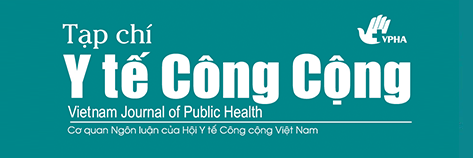Tình hình bạo lực ở thanh thiếu niên Việt Nam qua các điều tra quốc gia (Violent behaviors among Vietnamese youth: current status and changes from the two Survey Assessment of Vietnamese Youth data)
Tóm tắt
Gánh nặng bệnh tật về chấn thương bạo lực ở vị thành niên đang ngày càng thu hút sự quan tâm từ Chính phủ cũng như từ cộng đồng. Nghiên cứu này nhằm: mô tả thực trạng hành vi bạo lực ở vị thành niên và thanh niên Việt Nam dựa trên số liệu Điều tra Quốc gia Vị thành niên và Thanh Niên 2009 (SAVY2) và sự thay đổi so với vòng điều tra 5 năm trước. Nghiên cứu dựa trên phân tích số liệu của SAVY2 với thiết kế điều tra cắt ngang trên cộng đồng. Tổng số 10.044 thanh thiếu niên độ tuổi 14- 25 đã tham gia. Kết quả cho thấy mô hình chấn thương có chủ định ở SAVY2 tương tự so với SAVY1 nhưng các hành vi đều có xu hướng gia tăng. Có 3% thanh thiếu niên cho biết đã từng bị chấn thương do người trong gia đình gây ra. Tỷ lệ bị người khác ở ngoài gia đình cố tình gây thương tích ở thanh thiếu niên Việt Nam là 8% và tỷ lệ này ở nam cao hơn có ý nghĩa thống kê so với nữ. Nam giới, sống ở thành thị, đã từng say rượu bia, từng bị người khác cố ý gây thương tích, đã từng tham gia tụ tập gây rối, từng mang vũ khí có nguy cơ gây thương tích cho người khác nhiều nhất. Nghiên cứu cũng nêu ra một số gợi ý cho các nghiên cứu sau và định hướng về mặt chính sách.
English abstract
Objective: This study aims to provide key descriptive information about the current status of violence among adolescents and youth in Vietnam as well as the related factors. Methods: Cross-sectional survey data from Survey Assessment of Vietnamese Adolescents and Youths 2009 (SAVY2) and compared with SAVY1 in 2004. Binary and multivariate analysis was performed. Results: In total, 10,044 young people aged 14-25 completed the questionnaire. The pattern of intentional injury found in SAVY2 is quite similar to that in SAVY1, but the prevalence of most behaviors is higher. Regarding the violent behaviors within the family, 3% of the youth reported to have been injured as a result of violent behaviors caused by a family member. The rate of being intentionally injured by others outside home is 8% among Vietnamese youths, and significantly higher in male than in female. The youths that are most likely to hurt other people are: male in the urban settings, those who had ever been drunk, those who had been injured by others intentionally, those who took part in group riot and carried weapon, and those who had low self-esteem. Youths who reported a strong connection with their family are 80% less likely to cause intentional injury to others. Some policy implications and suggestions for further study are proposed, based on these findings.
Objective: This study aims to provide key descriptive information about the current status of violence among adolescents and youth in Vietnam as well as the related factors. Methods: Cross-sectional survey data from Survey Assessment of Vietnamese Adolescents and Youths 2009 (SAVY2) and compared with SAVY1 in 2004. Binary and multivariate analysis was performed. Results: In total, 10,044 young people aged 14-25 completed the questionnaire. The pattern of intentional injury found in SAVY2 is quite similar to that in SAVY1, but the prevalence of most behaviors is higher. Regarding the violent behaviors within the family, 3% of the youth reported to have been injured as a result of violent behaviors caused by a family member. The rate of being intentionally injured by others outside home is 8% among Vietnamese youths, and significantly higher in male than in female. The youths that are most likely to hurt other people are: male in the urban settings, those who had ever been drunk, those who had been injured by others intentionally, those who took part in group riot and carried weapon, and those who had low self-esteem. Youths who reported a strong connection with their family are 80% less likely to cause intentional injury to others. Some policy implications and suggestions for further study are proposed, based on these findings.
Từ khóa
Toàn văn:
PDF (English)##submission.citations##
Tài liệu tiếng Anh
Cheng, T.L., et al., Adolescent Assault Injury: Risk and Protective Factors and Locations of Contact for Intervention. Pediatrics, 2003. 112(4): p. 931-938.
Krantz, G. and N. Vung. The role of controlling behaviour in intimate partner violence and its health effects: a population based study from rural Vietnam. BMC Public Health, 2009. 9(1): p. 1-10-10.
Linh, L.C., Monograph on Illness, Injury and Violence of Vietnamese Youth. Ministry of Health of Vietnam 2006.
Linh, L.C., Illness, Injury, and Violence among Vietnamese Youth. Specific topic report, SAVY, 2006.
Linnan, M.J.P., Cuong V; Le, Linh C; Le, Phuong N; Le, Anh V (Editors),, Report to UNICEF on the Vietnam Multicenter Injury Survey. Hanoi School of Public Health, 2003.
Ministry of Health, General Statistical Office. Report on National Health Survey 2001-2002. Medical Publishing House, Ha Noi, 2003.



